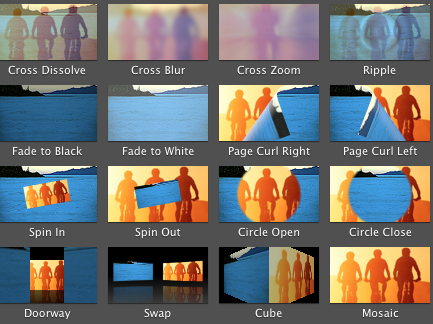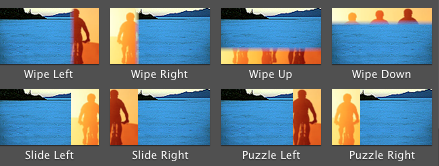Basic Writing in the 21st Century Academy:
The Challenge to Instructors
Bringing multimodal composition challenges the basic writing instructor on several levels. Multimodal assignments must connect explicitly to learning objectives that address areas like focus, organization, development, grammar, and mechanics. At the same time, as essential literacy practices change, I believe that it is necessary to ask students to engage in digital multimodal projects. As Shipka’s (2011) work reveals, it is very possible to engage students in non-digital, multimodal assignments. Although non-digital assignments have inherent value, by not requiring students to engage with technology, basic writing teachers might fall short of addressing the narrative of literacy’s progress if technology is avoided completely.
Add to this, then, a few other complications. Students who place into basic writing courses are often less likely to have experience with or access to a wide variety of digital tools (including even access to a computer or the Internet at home). These students are also much more likely to come from low-income communities, so asking students to purchase costly equipment or software is unrealistic. On top of this, faculty who teach basic writing are likely to be overextended and have little time to participate in professional development activities offered by their colleges. Campus resources are also likely to be limited and, as DeVoss et al. (2005) discovered, it may be difficult to re-direct resources to a course where they are not perceived to be needed.
Mary Soliday (2002) argues that, "Under pressure to justify the existence of programs and students, while trying to stabilize a shaky identity in the academy, basic writing teachers, unsurprisingly, tend to dwell in an exigent present" (p. 3). On one hand, basic writing must respond to a print-based literacy crisis, lest courses or programs succumb to external pressures to meet academic standards. At the same time, however, as NCTE's long history of considering multimedia reveals, these standards are changing under our feet. Further complicating the discussion is the tension between traditions of print-based literacy and multimodal literacies. What most scholars can likely agree on is that basic writing is dwelling in "an exigent present;" where we might diverge, however, is in an understanding of what this means. How can we attend to critics of basic writing who concern themselves with print-based literacy and more "traditional" academic standards, while also looking forward to the seemingly inevitable transition to multimodal literacies that further challenge existing standards?
Until multimodal composing is fully understood and accepted as a vital skill for 21st Century students, perhaps the only way for basic writing instructors to bridge the divide between basic skills and a crisis of progress is to carefully align multimodal assignments with existing standards and course outcomes. Below is one possible assignment that offers a model for how to align the goals of a multimodal assignment with existing institutional expectations for a basic writing course.
Aligning with Skills-Based Departmental Learning Outcomes
The learning outcomes from my own institution are typical of many basic writing courses. Students are expected to master thesis statements, coherence, integration of sources, paragraphs, grammar, and basic MLA rules for citation.
The challenge inherent in aligning a multimodal project with these learning outcomes becomes clear when one looks to the scholarship on assessment of multimodal texts; much of that work focuses on the rhetorical value of a project, (see Shipka, 2009; Borton & Huot, 2007; Kittle, 2009; Sorapure, 2005) rather than on whether or not that project teaches students a discrete skill.
Of course, it is certainly possible to move assessment of a multimodal project beyond a focus on audience, purpose, and context and towards a more specific set of discrete skills. Below I offer an assignment that can align with skill-based learning outcomes for basic writing.
Assignment:
Create a 2-3 minute video that presents an argument about an issue. You may use any combination of images, video, audio, or text that will help you to make your point.
Requirements:
Your video should BLEND elements from at least four different sources (e.g., video or audio files that you create, or files that are available via Creative Commons online).
Your video should make a clear and ORIGINAL POINT about your topic—do not simply extended chunks of another person’s argument and call it your own.
Asking students to compose a video rather than complete a print-based essay not only meets typical learning outcomes but also invites students to deepen their metacognitive abilities through discussion.
For example, I often use this New Brunswick Ward Campaign video, created by a student a semester after he graduated from Rutgers University, as a model for teaching video arguments. My goal in showing this video is to teach students how to think about gathering material and editing a video that will present a focused position that is supported by synthesis of evidence from multiple sources. Although this example is far more sophisticated than what I would expect from a basic writing student, I would share this with colleagues as evidence of how a video assignment can potentially meet the designated outcomes for a course.
D'Alonzo's video makes a powerful argument about corruption in the city of New Brunswick, NJ. Beyond that, however, his careful integration of a variety of sources and his ability to put those sources in conversation with one another in order to achieve his purpose indicates that this is something that can be easily achieved in a video rather than in an essay.
Coherence as a Discrete Skill
Basic writing learning outcomes explicitly address coherence as it is associated with organization and transitioning in a written text. In “Looking for Coherence in a Fragmented World: Notes Toward a New Assessment Design,” Yancey (2004b) argues that coherence is a crucial element in both printed and digital texts. Although Yancey’s discussion makes clear that coherence cannot be detached from the rhetorical work of any text, for purposes of assessment in a basic writing class, particular textual features can be analyzed to evaluate a text’s coherence: transitions that show relationships within and between paragraphs. (See Yancey’s full article for a more detailed overview of coherence in printed texts.) As part of the video assignment, I include a lesson plan that addresses coherence.
A Multimodal Assignment for Teaching Coherence
Coherence in a written text is often evaluated through transitional words and phrases, and clear relationships between ideas. Many different resources present transitional words and phrases in a categorical list that identifies the purpose of the transition. (A list is available from Purdue OWL’s website.)
A print-based lesson might ask students to identify transitional words in a text, to add transitional words in a text, or change transitional words in a text and discuss how those changes impact meaning.
For a multimodal video assignment, something similar can be accomplished. In iMovie 09, for example, the following transitions are available:


I often ask students to work in small groups or as a class to categorize the iMovie transitions either within the framework that the Purdue OWL list provides, or a new list of categories that we develop together. We discuss how the iMovie transitions present relationships between ideas, and then students focus on adding transitions in their videos where appropriate. Students' reflective work as well as their completed video bridge what appears to be a gap between multimodal and print-based objectives—and an assignment such as this also provides them much needed experience in 21st century literacy practices.